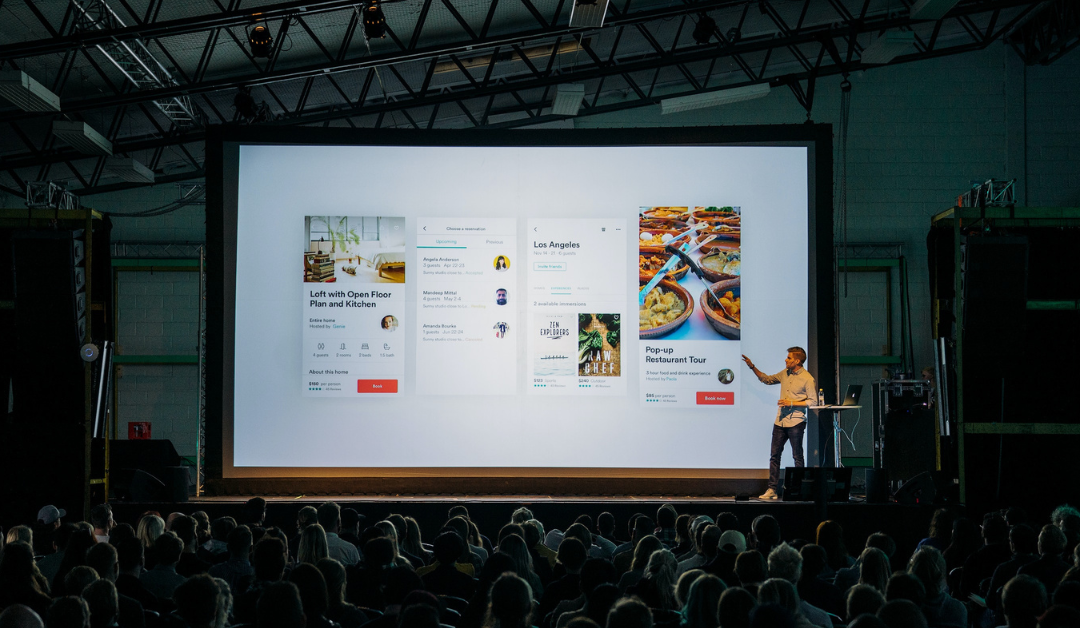The pitch deck is the most important weapon in a startup company’s tool box. The purpose of a pitch deck is to raise capital and negotiate partnerships. But they are also used for hiring and communicating internally with employees about the company’s mission, vision, goals and objectives. This article will clarify the purpose of a pitch deck and presents specific approaches to creating winning pitch decks.
Why does one pitch deck accomplish its purpose and another doesn’t? As an investor, there are specific things I want presented in a pitch deck.
A Little History on the Purpose of a Pitch Deck
A few decades ago – before PowerPoint and Keynote became ubiquitous presentation systems—startup companies would write business plans when seeking capital. These plans often contained 25 to 30 pages or more of text. They answered the questions that investors wanted answered. This part came after an initial meeting. Now the purpose of a pitch deck has shifted.
Obtaining a meeting with a Venture Capitalist usually began with an introduction and a brief conversation with an investor about the business. If the investor was interested, they would ask the company to send a business plan. Then, if the investor liked the business plan, they would invite the company to attend a meeting to discuss the opportunity. So, the business plan was essentially a ticket to a meeting with a Venture Capitalist.
The Process Has Changed in Recent Years
As PowerPoint and Keynote became more commonly used, pitch decks have replaced the business plan. Today, if a startup wants a meeting with an investor, the common practice is to send a pitch deck. Therefore, the purpose of a pitch deck has been to replace the business plan as a ticket for a meeting.
But the purpose of a pitch deck can vary. These include:
- For potential investors to schedule meetings.
- Proposals from potential business partners.
- Selecting presenters for an event or conference.
- An audience request for a stand up presentation.
- Planning purposes by the employees of a company.
How Technology Has Changed the Presentation of Pitch Decks
Lately I’ve been seeing many pitch decks that contain graphics on every slide, but very little content. They might work well in a presentation format, but when sent to a potential investor, they really don’t answer the questions that an investor is asking. So they’re not serving the true purpose of a pitch deck.
When I review pitch decks to select Monday Club presenters, I print each one so I can write comments on the pages. I also grade each pitch deck with a numeric score and leave comments on the front page. I often use these comments to sort pitch decks into different piles according to their investment potential.
Some formats are problematic—such as white text on a dark background or a complicated pictorial or photographic background. Both of these are problems because they use too much printer ink or toner.
The difficulty I see in the current environment is that, more and more, companies (and pitch deck preparers) are using “Presentation Prompter” type decks as a “Ticket for a Meeting” type of pitch deck. This is why it is important to know the purpose of your pitch deck.
I receive many Monday Club submissions that are very clearly the “Presentation Prompter” type of pitch decks. They often use illustrations and diagrams that require explanation, but, of course, there’s no one there to explain. You can probably see why this is a problem.
What is the Purpose of a Pitch Deck Now?
The ultimate purpose of a pitch deck is to show a potential investor how they can make an attractive financial return by investing in this company. In simplistic terms, the return on investment (ROI) is the total profit created during the course of the investment divided by the required investment—or revenues less costs and expenses divided by total investment. It needs to be clear.
This equation defines the important questions that investors want answered:
- What are the sources of revenue?
- What problem is the company solving?
- Who has the problem? i.e., who is the customer?
- How do we know the customer will buy the company’s product?
- How do we know the company will be able to compete effectively?
- The size of the market opportunity? How many potential customers are there?
- Cost to make the product?
- The cost to operate the company?
- What investment will be required and how will it be used?
Each of these questions leads to others, but these bullets are a good summary of the questions an investor definitely wants answered. Answering these questions is much more important than graphics if the purpose of your pitch deck is to appeal to potential investors.
How Do You Begin Creating a Pitch Deck?
The best pitch decks start out as internal communication and planning documents. PowerPoint is a great vehicle for recording internal meetings. Important concepts and decisions can be recorded with a few bullets, which makes the document easy to modify as plans and decisions change.
A “planning” deck should be used as an internal planning and communication document so that the members of the management team have a forum for discussing various strategic options and making sure that everyone is on the same page regarding what the company is trying to accomplish.
I think companies should use this type of deck for thinking through and communicating all important strategic and operational issues. A benefit is that the purpose of this pitch deck can very easily be evolved into an investor-friendly deck when needed.
The advantage of this internal process for creating a pitch deck is that it creates ownership of the deck by management and the team. When companies retain outsiders to create their pitch deck, some or all, of this ownership can get lost. Besides, investors can tell if a deck was created by an outsider, and they prefer to invest in teams that have the expertise to create their own deck. It should be noted that it is often the outside creator decks that overuse graphics, color, and exotic backgrounds. Remember, investors don’t really want to see these because they aren’t answering the questions we want answered.
Tailoring the Purpose of a Pitch Deck for Potential Investors
Investors like printed copies of pitch decks because they are useful to have on hand and for reference. Why is this so?
- Printed copies of a pitch deck can be used as a handout so investors can remember or file away the presentation.
- Investors often make printed copies of pitch decks so they can make notes for future reference and/or give the slides to their partners or other prospective investors for review.
- Some viewers of your deck may want to print the presentation for historical purposes. Or to make notes on the slides.
Below are two types, and purposes, of pitch decks. This should give some insight on what potential investors expect, depending on the goal of your deck.
The Purpose of The “Ticket for a Meeting” Pitch Deck
When a company sends a pitch deck to a prospective investor in hopes of obtaining a meeting, the deck needs to stand for itself. It needs to answer the questions that investors ask. This probably means that it will contain quite a bit of text and prose explaining the important business and investment issues. It’s okay to use graphics and visual aids in this deck, provided that they help to clarify the message. But graphics that don’t send a clear message should definitely be avoided.
The “Presentation Prompter” Deck
When presenting in front of a group of people (or screen-shares for a Zoom meeting), it’s best not to have slides full of text. Presumably, if the audience is reading the text, they are not hearing the presenter. For the purpose of this pitch deck, it’s okay to use slides that merely prompt the presenter on what to say. The slides can contain just a few bullets as reminders for the presenter, or they can contain graphics that trigger the presenter’s comments. Graphics can be more complicated, as the presenter is there to walk the audience through a detailed explanation.
As you can see, these pitch decks present somewhat different design requirements. The perfect “ticket” presentation is self-explanatory, while the “prompter” deck can be more artsy with fewer words and more graphics requiring explanation.
In part two of this explainer, I will cover a compromise that serves both purposes. You don’t need to create two separate pitch decks. You need a good foundation for your pitch deck.
How Many Pitch Decks Do I Need?
Most companies do not want to create two pitch decks, so many choose to develop a “ticket” pitch deck or a “prompter” pitch deck. The problem here is that the “ticket” deck contains too much text for a standup presentation and the “prompter” deck is not sufficiently self-explanatory when used to solicit a meeting or an investment.
How do we find a solution? By creating what will be the best pitch deck to serve multiple purposes.
I hope you found this useful and obtained a better understanding of the purpose of a pitch deck. In the follow up to this explainer, you’ll learn how to create the best pitch deck.



Recent Comments